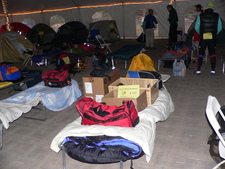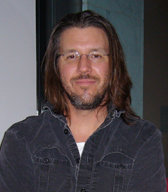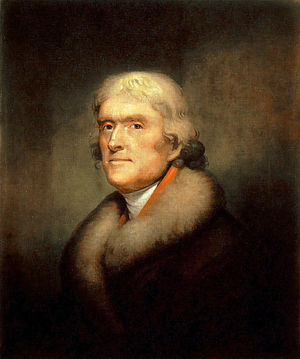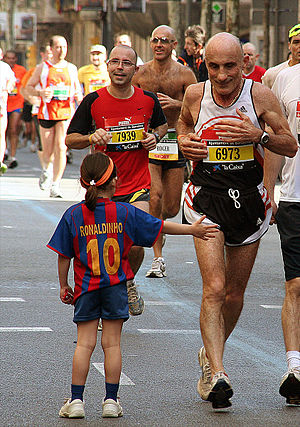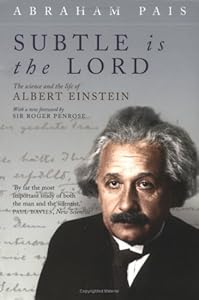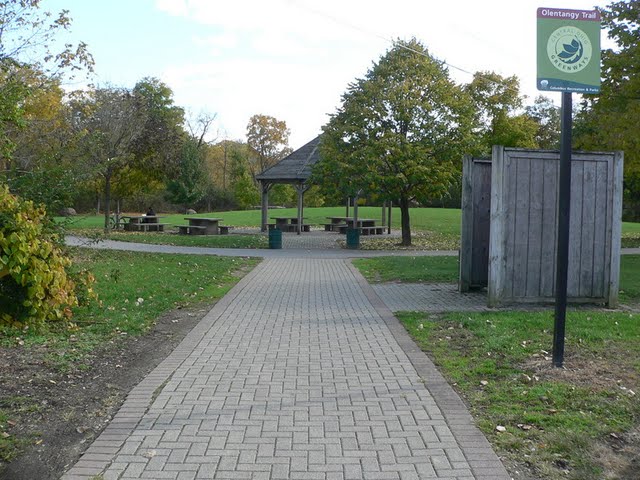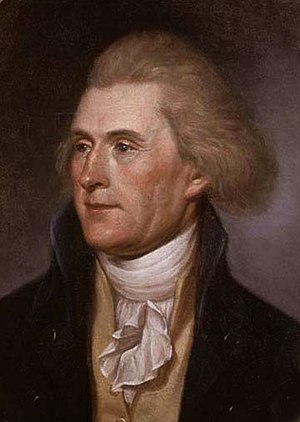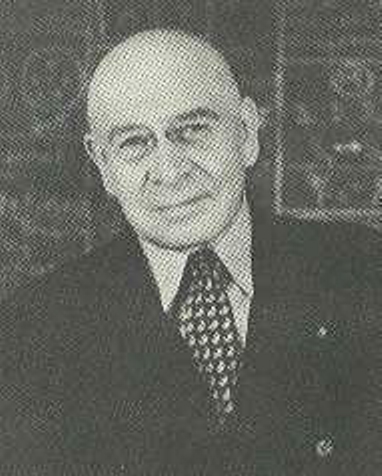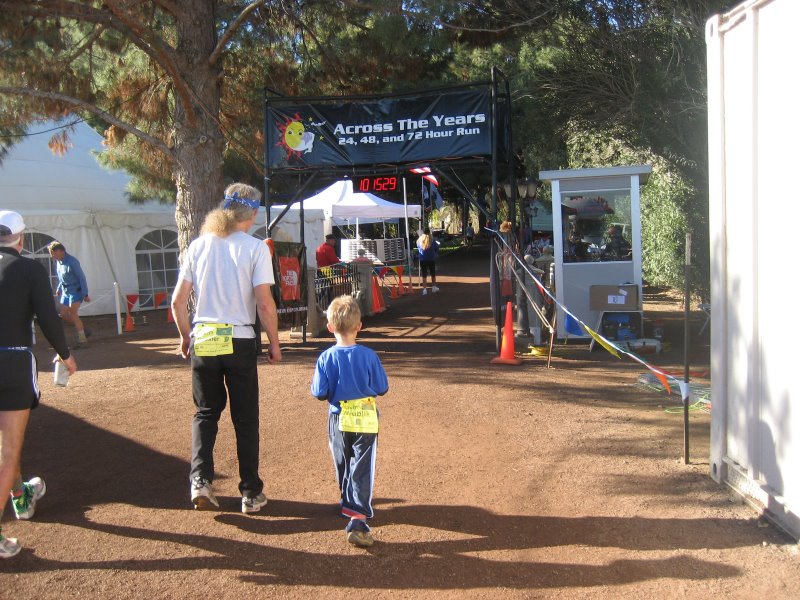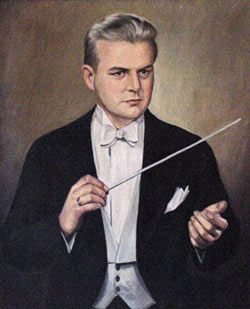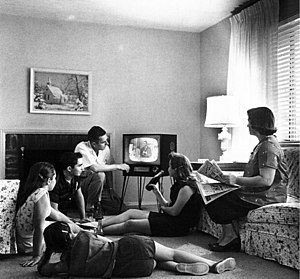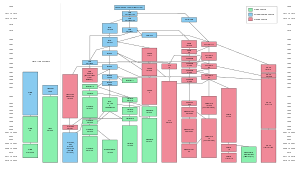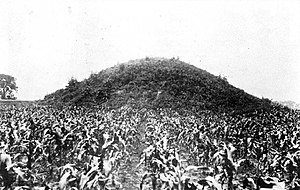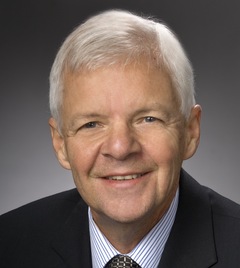At 9:00 a.m. on December 29, 2010, I began to run the 72-hour race at Across the Years. By 5:30 p.m., after completing only 81 laps (40.5 km, 25.166 miles), I was packed up and on my way to my friends’ house, to be their unexpected house guest for the next four days, where I would occasionally watch the progress of the race from the laptop on the kitchen counter, when it was available. The bad weather on Wednesday merely accelerated illness that had been coming on over the course of three days, and drove me to follow what was clearly the conservative course of wisdom.
After eleven consecutive races at Across the Years, being involved most of those years with helping to present the event, this was not how I wanted nor the way I expected to conclude my experience there. I regretted not being there at the end to say proper good-byes to so many people I have come to regard as friends.
Scrolling Back in Time
The year 2008 had been one of the toughest years of my life, as I lived the first eight months alone in an apartment, trying to master a new and challenging job, while my wife remained in Phoenix, working and trying to sell our house. Being consumed by these overbearing distractions, I nearly stopped running entirely, and suffered physical consequences. My personal worst performance of 134 miles at the 2008 race, all but the last half lap walked, betrayed the reality that I had lost my focus as a multiday runner.
After the 2008 race I made it known to my race organizer associates that the just-finished race would be my last, that I would not return in 2009 to run, nor would I be available to assist with the website and other responsibilities. I made the decision the previous June, but saved telling about it until after the race.
Unexpectedly (to me, as I was no longer included in the planning), the race took a hiatus in 2009, the first and only one since 1983. If there had been a race, I would not have been there, but because there wasn’t, I managed to take a year off without breaking my attendance streak. Meanwhile, changes in my personal circumstances enabled me to work a little more on my running. By the end of 2009 I was ready to begin regular training once again.
In Spring 2010, an announcement appeared on the Across the Years website saying there would be a race in 2010. This was good news, but I had no intention of either running or helping out myself.
However, I’ll always feel a sense of personal attachment to Across the Years. Above all, I created a relational database that records all race and runner data back to the very beginning; that history permeates the website, particularly in the biographies and statistics sections. If that were to become lost or mangled, much of the race’s legacy would be gone, and along with it, much of what I was able to contribute the last several years.
Thus it came about that last Spring I made myself available to Jamil and Nick Coury, Across the Years’ capable new race directors, to support the now hoary website for one more edition of the race, while they learned how to put on this race in the grand tradition that had developed around it.
My offer was with utterly no expectation of being able to be there to run myself. Financial and logistical problems aside (both huge issues for me at present), I didn’t think I could get back in sufficient shape to run a 72-hour race.
As 2010 unfolded, my running improved. In late September, circumstances unexpectedly developed whereby I would be able to run the race. I had just run the North Coast 24-Hour Endurance Run, with encouraging results, was planning on running the Columbus Half Marathon with my daughter in mid-October (which also turned out well), and even had tentative plans to run a 50K in early December. Could I possibly be ready?
My confidence was that being in much better shape presently than I was in 2008, despite two additional years of aging (which is clearly starting to make a difference), I should at the very least be able to do better at the race than I did that year, if for no other reason than because I would be able to run a great deal more of it than I did then.
Therefore, I set my goal to reach at least 150 miles, which would have resulted in a solid mid-pack finish in a strong field, and thinking I could do even better than that if everything fell together right.
Complications
Then the complications began to set in.
I worried first about transporting my tent, but learned that space inside the tent this year would be cramped, and that the luxury condo tent I’ve customarily used is too big and would be unwelcome. Wimp that I am, setting up in the yard was unthinkable to me, even though some persons do well with that.
Therefore, I decided to do entirely without a tent, trying for the first time to work with just a cot, a borrowed sleeping bag, a chair, and a few cardboard boxes to keep organized. Other 72-hour runners have managed that way just fine before me. Why couldn’t I?
My biggest fear was learning that the main area of the big tent would not be heated as it customarily had been, although there would be two smaller areas that would be heated toasty warm. In years past I’ve been uncomfortable changing clothes inside my personal tent even with the heat on. I was unsure how I’d manage under these new conditions.
Another goal I set for 2010 was to lose the 25 pounds I’d gained since moving to Ohio, which I almost accomplished by September 3, when I pulled up short with an Achilles injury while on a training run. Although it gave me no trouble at North Coast 24-hour two weeks later, or at Columbus Half Marathon in mid-October, this caused me to cut back on my training for the rest of the year, and as a consequence, I gained back six or seven pounds. I stabilized around 190, but had expected to be in the mid-170s by race day, close to my running weight when I had my best runs at Across the Years.
Ten days before the race, I began to track weather predictions, hoping for unseasonably warm weather. Ha! The earliest indications were that there might be trouble. As race day drew near, the more certain it seemed that there would be some unpleasantness. Two or three days before the race we learned that a cold front was on the way, to be preceded by heavy rain on December 29, the first day of the race. Nighttime temperatures would drop into the mid-twenties. In comparison, Columbus would warm up quite a bit. Overall, the weather would be at least as cold and a lot wetter in Arizona than at home.
These conditions all runners would share. But for me the worst news was yet to come, as two days before leaving, I sensed impending illness creeping up on me. I started popping echinacea and vitamin C, and skipped my last day of running in favor of extra rest. It was no use. Whatever was attacking me would insist on running its course, peaking on Thursday during the race.
I arrived in Phoenix at noon the day before the race and was picked up at the airport by my friend Nathan, who hauled me directly to Nardini Manor.
The afternoon before Across the Years has always seemed like a holiday to me. I love reacquainting myself with the venue, staking out my territory, and especially greeting runners as they arrive, many of whom I’ve now known for quite a few years.
I got my stuff set up around the cot, and sorted my gear into boxes that tucked neatly under the cot for when I wanted to lie down, and sat in a tidy row on top when I wanted access. It looked like it might work out well. Then I went into the Manor house to pick up my race stuff, and finally headed off to my hosts’ house, where I was treated like royalty. (I stayed with people who have been some of our closest friends for over thirty years.)
The next shock came when Nathan informed me that because of work obligations he’d have to drop me off at Nardini Manor at 4:30 a.m., hoping that wouldn’t be an inconvenience. To my surprise, it worked out well. At 6:15 p.m., after a delicious high-carb spaghetti dinner, it was 8:15 p.m. Ohio time. I’d been up since 4:45 a.m., and was already starting to nod out. So I crawled off to bed, pulled the covers around my nose at 6:30, and except for increasingly intense coughing fits during the night, slept well until 2:30 a.m., a total of eight hours in bed.
It’s an hour’s drive from their house to Nardini Manor. I walked into the big tent at 4:16 a.m., to find several people asleep. The temperature was not uncomfortable. I cared for a handful of necessary chores, crawled into the sleeping bag at 4:40, and other than the coughing, rested comfortably for another two hours, finally getting up at 6:50, when I heard other people stirring. In all I got a total of over ten hours of rack time before the race, which I hadn’t expected.
Having no tent available, my first task was to scurry off to the bathroom to smear Bag Balm the temperature of ice and consistency of engine grease and also Vaseline onto body parts only my doctor knows the names of or has even seen.
Next I headed back to the Manor house, because I’d gotten two left gloves in my goodie bag, whereas I have only one left hand, and also a right hand that was lacking a matching glove. Another problem solved.
While packing I discovered that I’m out of Elastikon tape, and couldn’t get any that day. For the first time I’d try to get through a long race with only lubricants.
I’ve owned and used Oakley M Frame Heater sunglasses since 1996; they live almost permanently on my head. I wear them for eye protection even in rain and darkness. They were nowhere to be found. Left them in Ohio. Dang.
Little details such as these may not seem important, but they add up, and in a long race can have a significant impact.
Finally, I set up my personal aid station near where I’ve always based my operations in previous years, and put a chair there (which my bottom never touched) and my Spartan collection of supplies — a smallish covered rectangular box of stuff in bottles such as electrolytes, ibuprofen and caffeine, covered by a transparent plastic bag, plus a single water bottle.
How did I feel? Still coughing frequently, but not enough to stop me from running.
The Race Begins
It was cool and overcast but not uncomfortable at the race start; we were certain that heavy rain was on the way, but everyone was in a rousing good mood.
Technically, every loop course has a net elevation gain and loss of zero feet, but every runner knows that every loop has one direction that is better for running than the other. At Nardini Manor the general consensus is that the “good” direction is counterclockwise, the direction the race starts in.
My method would be to run about two-thirds of every lap until I couldn’t do it any more. In ideal conditions and earlier years, I could get through a whole 24 hours like that, with breaks only to stop at the potty.
At North Coast in September I ran a good first twelve hours, slowed down after that, but didn’t sit down until fourteen and a half hours. I figured I’d be good at Across the Years until close to midnight before having to deal with significant problems.
I did well for the first two-hour segment, until we reversed directions. I had a harder time picking my run and walk spots in the clockwise direction. It seems almost all downhill to me. But I got through it.
By this time, the coughing was starting to bother me. It was hack, hack, hork, hork, spit in the bushes, and repeat, about six times per lap.
And Then the Rain
And then the rain began. It came on gradually, and at first was of little consequence. But it increased in intensity with relentless steadiness. After the first hour I scurried inside to pick up my rain gear that I’d already laid out, and got right back out.
It was fun for a while, and I heard no complaints. At the 2004 race (which became my lifetime PR year) we had an utter deluge on the first day. However, that year was not nearly as cold, and it didn’t last for nearly as long.
The track began to flood and become muddy. Crews appeared with brooms, attempting to push back the puddles. Workers with shovels dug grooves to channel major water flows. Within a couple of hours it seemed pointless to even try, and the crews gave up. The path on the straightaway along the southeast end became a slick mud field. Everyone’s legs were covered with mud halfway up their calves.
Adding to our running enjoyment was the strong wind that carried the ripest stench of mushy wet cow poo from the dairy farm a half mile to the north straight to our nostrils.
Some people seemed unconcerned and determined. For as long as I was there, Liz Bauer ran only in shoes, shorts, a jogbra, and Moeben sleeves, with no head covering. She looked like a desperate, drowning rat, but was running well. And she was far from the only one who seemed to be inadequately protected.
Eventually my rain gear proved to be of little help. It’s plenty waterproof, but I was soaked with sweat from the inside, and with the temperature dropping, was starting to shiver in it.
I suffer from Raynaud’s phenomenon. (I didn’t before I moved to Ohio.) Despite this, the circulation in my hands was okay, and I endured in wet cotton gloves for several hours with no significant discomfort to my hands. After six hours I ran into the tent for the second time to get fresh, dry gloves. Thereafter, even though I kept my gloved hands tucked up inside my raincoat sleeves, these too became wet from the inside out because of the sweat.
By early in the seventh hour my right Achilles tendon began to throb badly. Was it about to explode on me? The coughing and slick mud had already reduced me to walking most of the time. I wasn’t miserable yet, but wondered how much longer I could keep this up.
At this point my memory is unclear, and I don’t have accurate split times to help, but as I recall, I was starting to desire some hot food. I stopped at the aid station to ask about dinner and was told it would arrive in about a half hour. I think I went in the tent for a few minutes just to see what the warm areas were like, but came back out in just a minute or two, and did one more lap. The records say that I crossed at 7:31:57 into the race, with 40.5 km, 25.166 miles. No longer thinking about a twelve- to sixteen-hour initial stretch, I’d wanted to go at least a marathon before taking any kind of break, but I was already deep into the process of shutting down.
I went first into the front warming room, where I tried to dry out my gloves while stooped over in front of the flame-belching heater. Then I went into the other warming room, where there were cots, and where the temperature was blazing hot. I was in serious need of a place to strip naked, towel off, and put on all dry clothes. There wasn’t one. Other people were coping without that, but I wasn’t, and had no solution, so was facing a major logistical dilemma.
I ducked my head outside for a moment. It had grown dark, and was now like Mars out there. As bad as it was inside, outside was much worse, and later the rain became torrential, and was followed by bitter cold far worse than any I’d experienced the entire thirty years I’d lived in Arizona.
I don’t remember exactly at what point I realized that I couldn’t fight this for another sixty-four hours, but as I contemplated the passing of the rain to be followed by cold, I knew in my heart I was done. I called Nathan to see if there was any possibility he could come and bail me out, which I realized would also make me their unexpected house guest for the next four days. He left right away. Once I knew he was on the way, there was no changing my mind, so I yanked off my chip and turned it in to Nick Coury, saying, “I can’t do this,” with little more explanation than that, because he was busy, and because talking about it wouldn’t change anything.
While waiting, one runner commented on the conditions: “There is no competition, only survival.”
I understood. Fixed-time track races are above all running events. The best performances take place under ideal physical conditions: on a flat, broad course that is long enough to keep runners from piling up on each other, in good weather, at a venue that has basic facilities adequate to care for the needs of runners in reasonable comfort. Obviously, foul weather is shared in by all participants, but can serve to introduce a level of extraneous challenge to an event that may be a disadvantage to runners whose experience has been focused on tracks, roads, and asphalt, but who have rarely had to fight the variety of difficulties that often appear in other settings, such as in long and technical trail races. On this night the trail dogs just might have had the advantage.
I arrived at my friends’ house about 6:30, had a bit to eat, was in bed by around 8:30, and slept for eleven hours. The forecast said the conditions would clear up, but at 2:15 a.m. I was awakened by thunder and lightning and the heavy pounding of rain that sounded like a million elves running across the roof. Later I learned that the runners an hour away at Nardini Manor shared in that experience, which drove most of them into the tent for a while. When I got up in the morning the rain had stopped, but it remained very wet, very windy, and terribly cold all day. I spent the next three days sleeping, hanging out, reading, occasionally watching the race, and eating my generous friends’ food.
Because I didn’t properly conclude the race (even though there are no DNFs in fixed-time running), I’m at a loss to bring this story to a decisive end. It was what it was. I’m less disappointed than some persons might suppose I am, especially because I was able to get back one more time than I had thought possible, although I regret not seeing people who arrived after Wednesday night for the Thursday and Friday starts.
And on that note, it does seem that my days at Across the Years have finally come to an end — in the Brett Favre sense of being “done,” of course! Despite the bump at the end, my time with Across the Years has been one of the great experiences of my life.

